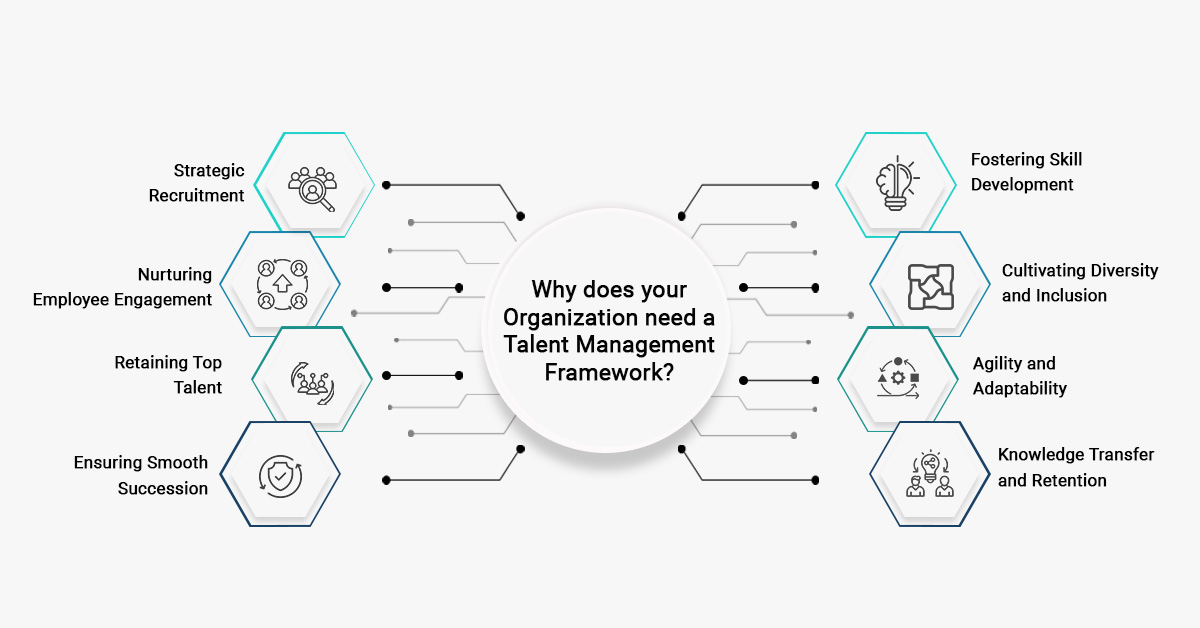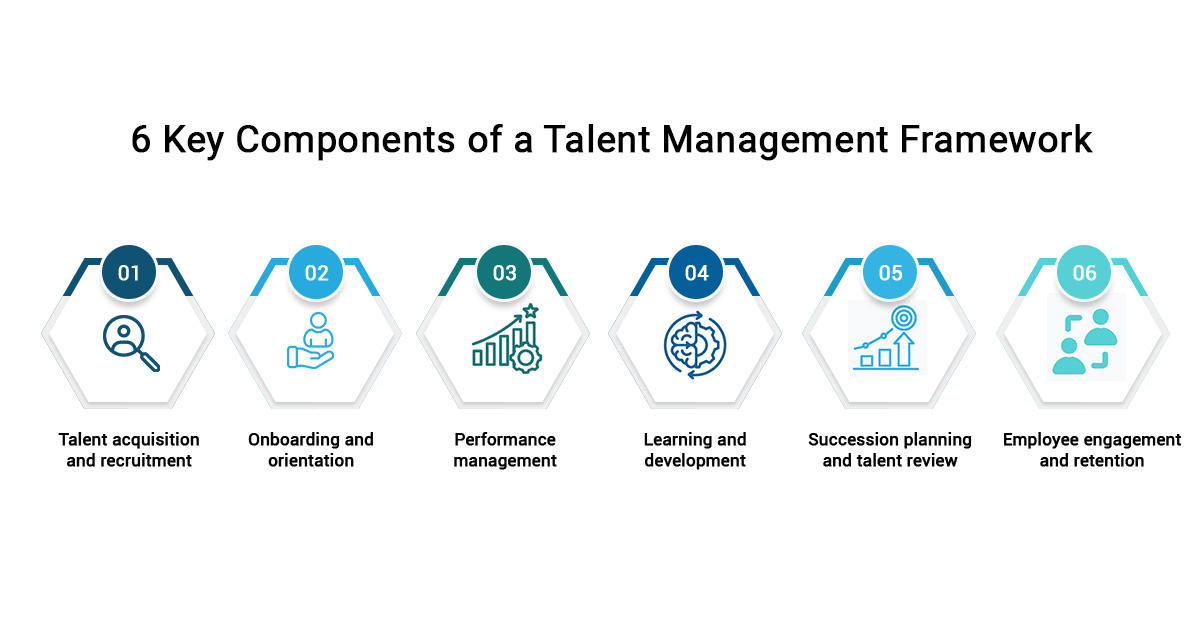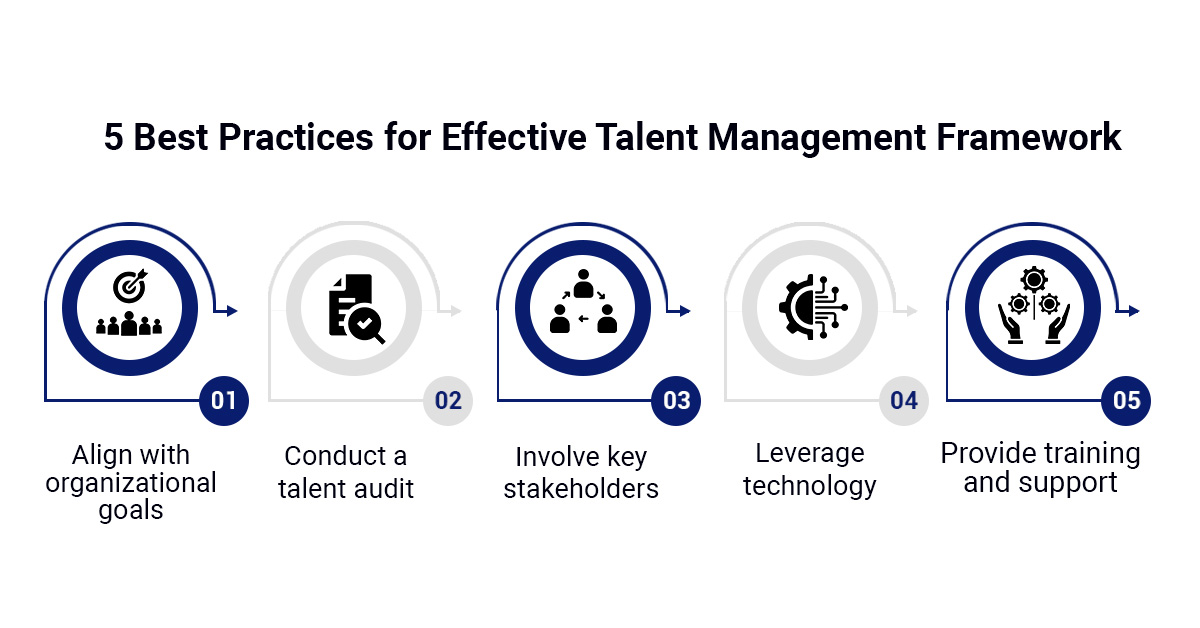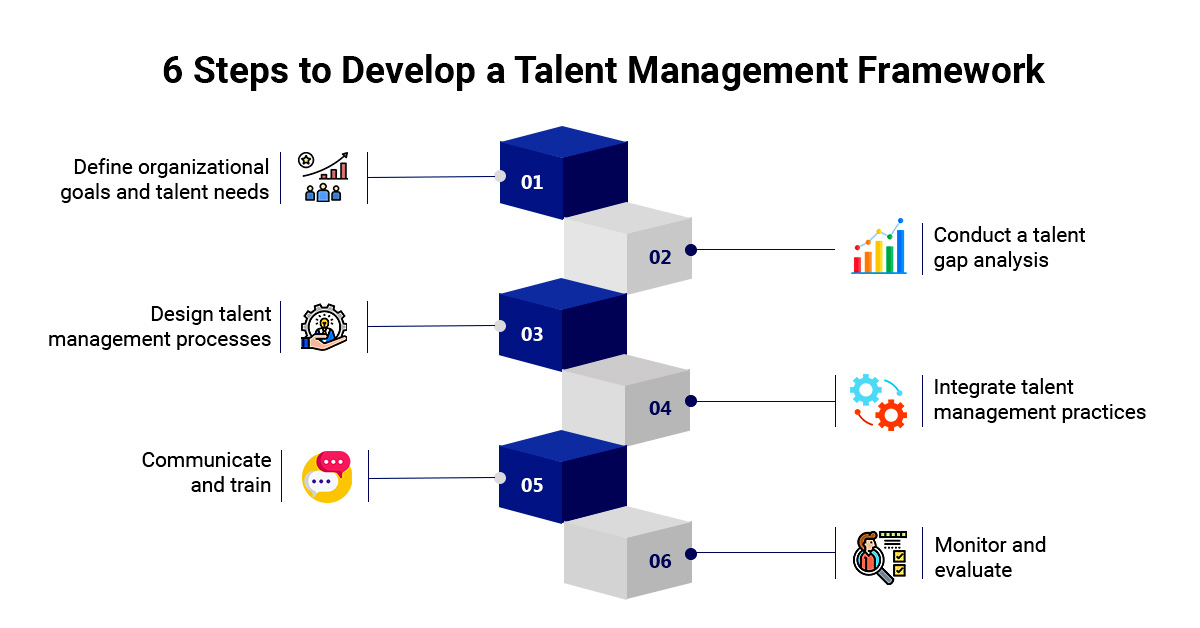
In today's competitive business landscape, organizations must go beyond traditional human resource practices and embrace talent management as a strategic priority. Talent management involves attracting, developing, and retaining exceptional employees who contribute to an organization's success. To effectively manage talent, organizations need a well-defined talent management framework that aligns HR strategies with their business objectives. In this article, we will explore what a talent management framework entails, why it is crucial for organizations, the components of an effective framework, best practices for its creation, and the steps to develop and implement one.
What is a Talent Management Framework?
A talent management framework is a strategic approach that outlines the processes, tools, and systems used to attract, develop, engage, and retain talented employees within an organization. It serves as a roadmap for HR professionals, guiding them in their efforts to optimize the entire talent lifecycle — from recruitment and onboarding to performance management and career development. A robust talent management framework encompasses various HR practices and aligns them with the organization's overall talent management strategy.
Why does your Organization need a Talent Management Framework?
A well-designed talent management framework is essential for organizations seeking to thrive in today's competitive landscape. Let's delve deeper into the valuable benefits it offers:

- 01. Strategic Recruitment: The talent management framework serves as a guiding compass when attracting and selecting candidates. By precisely defining the skills, competencies, and cultural alignment required for success within the organization, it ensures that the recruitment process is targeted and efficient. This not only saves time and resources but also increases the likelihood of finding candidates who possess the exact qualities needed to drive the organization forward.
- 02. Nurturing Employee Engagement: Engaged employees are the lifeblood of any successful organization. A talent management framework goes beyond simply filling positions; it focuses on creating an environment where employees feel valued, motivated, and connected to the organization's purpose. By recognizing and addressing the unique needs and aspirations of employees. The framework enhances job satisfaction, boosts productivity, and cultivates a culture of loyalty and commitment.
- 03. Retaining Top Talent: Losing valuable employees can be detrimental to an organization's growth and stability. A talent management framework includes proactive strategies for talent retention. It encompasses initiatives such as comprehensive performance management systems, robust career development opportunities, and succession planning. By offering avenues for growth, recognizing achievements, and providing a clear path for advancement, the framework promotes employee loyalty and reduces turnover.
- 04. Ensuring Smooth Succession: Organizations must have a strong leadership pipeline to ensure continuity and sustained growth. A talent management framework identifies high-potential individuals, assesses their readiness for leadership roles, and provides targeted development programs to groom them for future responsibilities. This systematic succession planning guarantees that the organization is equipped with competent leaders who can effectively guide teams and drive strategic objectives.
- 05. Fostering Skill Development: In a dynamic business landscape, staying ahead of the curve requires continuous skill development. A talent management framework identifies skill gaps within the workforce and facilitates the implementation of training and development programs. By offering opportunities for upskilling and reskilling, the framework empowers employees to acquire new competencies, ensuring that they remain equipped to handle evolving challenges and drive innovation within the organization.
- 06. Cultivating Diversity and Inclusion: Embracing diversity and fostering an inclusive work environment are critical for organizations to thrive. A talent management framework plays a pivotal role in promoting diversity by ensuring fair and unbiased talent management processes. It supports the development of diverse talent pipelines, fosters a culture of inclusion where different perspectives are valued, and creates opportunities for underrepresented groups to thrive. This not only enriches the organization's talent pool but also enhances creativity, innovation, and problem-solving capabilities.
- 07. Agility and Adaptability: Organizations must be agile and adaptable to navigate the ever-changing business landscape. A talent management framework enables effective workforce planning, ensuring that the organization has the right talent in the right place at the right time. It facilitates the identification of skill gaps, the deployment of talent to address emerging needs, and the fostering of a learning culture that encourages continuous improvement and innovation.
- 08. Knowledge Transfer and Retention: As experienced employees retire or move on, organizations face the risk of losing critical knowledge and expertise. A talent management framework emphasizes knowledge transfer and retention strategies. It encourages the capture and sharing of institutional knowledge, facilitates mentoring and coaching relationships to pass on tacit knowledge, and promotes knowledge-sharing initiatives across the organization. This safeguards intellectual capital, fosters a learning ecosystem, and ensures that the organization can leverage its collective wisdom for sustained success.
By implementing a robust talent management framework, organizations can attract top talent, nurture employee potential, align their workforce with strategic goals, and cultivate a thriving and inclusive organizational culture. It serves as a blueprint for effective talent management practices, empowering organizations to adapt, innovate, and achieve long-term success in a rapidly evolving business environment.
Components of an Effective Talent Management Framework
An effective talent management framework comprises several key components that work together to optimize talent management practices within an organization. These components include:

- 01. Talent acquisition and recruitment: This component focuses on attracting top talent through targeted recruitment strategies, employer branding, and streamlined selection processes.
- 02. Onboarding and orientation: Ensuring a smooth transition for new hires is essential for their engagement and productivity. A comprehensive onboarding program introduces employees to the organization's culture, values, and expectations, setting them up for success.
- 03. Performance management: Setting clear performance expectations, providing regular feedback, and aligning individual goals with organizational objectives are critical aspects of performance management. A well-designed framework incorporates these elements to drive continuous improvement and growth.
- 04. Learning and development: Talent management goes beyond hiring and retaining employees; it involves nurturing their skills and capabilities. A robust framework provides opportunities for continuous learning and development, including training programs, mentorship initiatives, and career progression pathways.
- 05. Succession planning and talent review: Identifying high-potential employees and preparing them for future leadership roles is vital for long-term organizational success. A talent management framework includes mechanisms for talent review and succession planning to ensure a pipeline of capable leaders.
- 06. Employee engagement and retention: Engaged employees are more likely to stay with an organization and contribute their best efforts. A talent management framework incorporates strategies to enhance employee engagement, such as recognition programs, work-life balance initiatives, and career growth opportunities.
Best Practices For Creating a Comprehensive Talent Management Framework
To create a comprehensive talent management framework, HR professionals should consider the following best practices:

- 01. Align with organizational goals: Ensure that the talent management framework is aligned with the organization's strategic objectives, vision, and values.
- 02. Conduct a talent audit: Evaluate the organization's current talent pool, identify gaps, and assess future talent needs to inform the framework's design.
- 03. Involve key stakeholders: Collaborate with leaders, managers, and employees across different levels and departments to gather insights and ensure buy-in for the framework.
- 04. Leverage technology: Adopt HR technology solutions that facilitate talent management processes, such as applicant tracking systems, learning management systems, and performance management software.
- 05. Provide training and support: Equip HR professionals and managers with the necessary skills and knowledge to effectively implement and maintain the talent management framework.
Steps To Develop a Talent Management Framework
Developing and implementing an effective talent management framework involves several steps:

-
01.
Define organizational goals and talent needs:
Understand the organization's strategic objectives and identify the key competencies required for success.
-
02.
Conduct a talent gap analysis:
Assess the current talent pool and identify areas of strength and weakness. Determine the critical roles and skills that need to be developed or acquired.
-
03.
Design talent management processes:
Develop clear and consistent processes for talent acquisition, onboarding, performance management, learning and development, succession planning, and employee engagement.
-
04.
Integrate talent management practices:
Ensure that the various components of the framework work together seamlessly, creating a cohesive talent management ecosystem.
-
05.
Communicate and train:
Communicate the talent management framework to all stakeholders, providing training and support to HR professionals, managers, and employees on its implementation and utilization.
- 06. Monitor and evaluate: Regularly assess the effectiveness of the talent management framework, gather feedback from stakeholders, and make necessary adjustments to improve its impact.
Conclusion
A well-designed talent management framework is essential for organizations to attract, develop, engage, and retain top talent. By aligning HR practices with strategic objectives, organizations can create an environment that fosters employee growth, productivity, and long-term success. HR professionals play a crucial role in developing and implementing an effective talent management framework that drives organizational excellence. By following best practices, engaging key stakeholders, and continuously evaluating and refining the framework, organizations can unlock the full potential of their talent and gain a competitive advantage in today's dynamic business landscape.
FAQs About Talent Management Framework
Q. What is a talent management framework?
A. A talent management framework is a structured approach provided to managers to develop the potential of employees and retain talent within an organization. It aims to create an inclusive approach across the organization, ensuring that talent is effectively identified, nurtured, and utilized in a way that benefits both the employees and the organization.
Q. How do you develop a talent management framework?
A. Developing a comprehensive talent management system requires tailoring it to fit the organization's specific needs. To create an effective framework, you need to assess your current strategy. Start by evaluating your current recruitment, training, internal mobility, and technology strategies. Identify areas that require improvement and prioritize your resources accordingly. Align your talent management goals with the business objectives, making sure they are measurable and effectively communicated to stakeholders. Lastly, realign your processes to support the business goals. This may involve implementing additional training or enhancing accountability.
Q. What are the main components of a talent management framework?
A. To build an extensive talent management framework, you should focus on four key components:
-
Ensure that learning and development opportunities are accessible to all staff.
-
Prioritize leadership and management development programs.
-
Establish talent pools, such as the 'Navigate' program, to identify and nurture high-potential individuals.
-
Strengthen your recruiting efforts to attract top talent to your organization.
Q. How will the talent management framework benefit your team?
A. A talent management framework benefits your team by optimizing individual talents, fostering a culture of continuous learning, creating a positive work environment, and strategically planning for future needs. By investing in your employees' development and recognizing their contributions, you can unlock their full potential, drive team performance, and eventually achieve greater success as an organization.
Q. What is a talent assessment framework?
A. The talent assessment framework encapsulates how an organization actively recruits and hires employees. It includes identifying roles and requirements, selecting and interviewing candidates, and ultimately making hiring decisions. The framework aligns with the company's goals and needs, addresses skill gaps and strengths, and incorporates cost and time considerations. It empowers hiring managers to integrate relevant assessment stages, streamline processes, mitigate bias, and enhance objectivity during recruitment.






